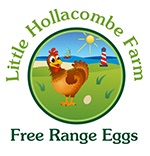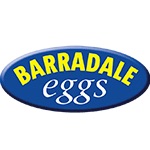With so many people in the UK offering to take in refugee families from Ukraine, at no inconsiderable cost to themselves, and with over £40 million being raised in one evening on Red Nose Day, it is difficult to come to terms with the fact that there is also poverty in this land, but there is.
The Joseph Rowntree Foundation reminded us of this in their 2022 report.
An astonishing 550,000 children have moved into poverty since the pandemic began.
14.5 million (22% of UK population) are now deemed to be in poverty. Of these, 8.1 million adults are actually working age, 4.3 million are children and 2.1 million are pensioners. These last two groups are most in need of help.
Almost 1 in 3 children (31%) are living in poverty, and this number is rising.
Nearly half of one-parent families, compared to 1 in 4 couples, have children in poverty.
18% of pensioners (20% single, 13% couples)
Single working age, no children: 23%
Single working age, with children: 45%
Working age couple, no children: 13%
Working age couple, with children: 22%
Children in poverty, lone parent: 49%
Children in poverty, couple: 25%
Child poverty where there are 3 or more children in the family, is almost twice that of 1 or 2 child families (45% cf. 24%).
36% of children in poverty are in families with a child under 5.
28% where children are 5-10
25% children 11-15
25% youngest child is over 16
With pensioners, the breakdown is:-
65 – 69: 17%
70 – 74 18%
75 – 79 17%
80 – 84 19%
85+ 22%
A much more even distribution.
2.9 million of those in poverty (20%) have low, or even no food security, unable to access enough variety or nutritious quality, compared to 4% of those not in poverty.
In children, a diet lacking calories, protein, vitamins and minerals will impede development of cognitive and emotional skills, and increased asthma and depression.
In adults, it leads to higher rates of chronic diseases like arthritis, asthma, diabetes and mental health issues, and a lower life expectancy.
Lowered birth weight, pre-tern delivery and slow cognitive development in the baby are the results for pregnant women in poverty.
America is seeing very similar problems.
The Household Pulse programme of the US Census Bureau, reported recently on families with children under five years old.
42% were unable to work due to lack of childcare. 21% receiving food assistance were unable to pay utilities. 10% experienced food scarcity in 7 days prior to survey. 7% not on current rent or mortgage payments and are unaware how they will be able to meet next payment. About 33% are anticipating eviction or foreclosure. About the same number have difficulty paying household expenses.
Many pensioners have been reported spending large amounts of time in coffee shops on cold days, in order to keep warm without racking up huge fuel bills at home. This trend may increase with heating bills going up in future.
But care must be taken.
While in the coffee shop, they will feel obliged to have at least one coffee, and perhaps a cake or sandwich.
Perhaps they could stretch their pension to buy a secondhand coffee maker. It may save money in the long run. They could have 5 cups of coffee at home for the price of one high street coffee. A £4 high street sandwich would pay for up to a dozen eggs and as the saying goes “If there’s an egg in the house, there’s a meal in the house”. (of course, electric costs to make the coffees must be taken into account, as well as perhaps the social aspect that some may get from being out in society, especially if they have been locked down alone for months on end with the pandemic – but with covid cases yet again rising, it’s a tough balance for these people to chose what is right for them and their situation).
Children’s needs are admirably served by the egg. Health recommendations for protein needs is 0.8g protein/kg bodyweight per day.
Recently, there have been suggestions that this should be increased by 50% or even doubled to 1.6g/kg bodyweight, especially for pensioners.
A Medium eggs has 6.4g protein, and a Large egg 7.5g. An XL comes in at 8.7g.
But also, the quality of the protein, in terms of it’s amino acids, is important.
The University of Illinois has given a suggested table of Digestible Amino Acids (essential A.A) in mg/g protein.
| Age Group: | His | He | Len | Lys | Met & Cys | Thr | Trp | Val |
|---|---|---|---|---|---|---|---|---|
| Infant (Birth – 6mths) | 21 | 55 | 96 | 69 | 33 | 44 | 17 | 55 |
| Child (5 mths – 3 yrs) | 20 | 32 | 66 | 57 | 27 | 31 | 8.5 | 43 |
| Older Child & Adult | 16 | 30 | 61 | 48 | 23 | 25 | 6.5 | 40 |
Eggs can be one of the most important food items for families in poverty. For what can be achieved with them, they are very cost-effective.
Free-range, currently being labelled as “Barn” can be bought in supermarkets for as little as 11p an egg (mixed weight box of 10 eggs).
If the families put aside any pre-conceptions, they may have heard about enriched cage-produced eggs, and they almost certainly would have done, then they can get these eggs, even in packs of 30 eggs, for 8p per egg from Iceland.
How long this can last given the incessant rise in production costs is anyone’s guess.








